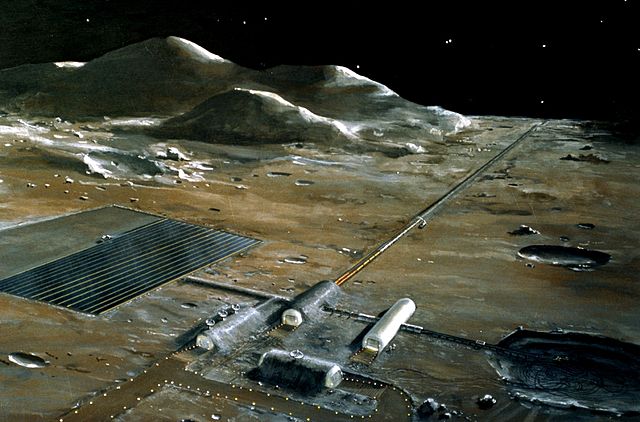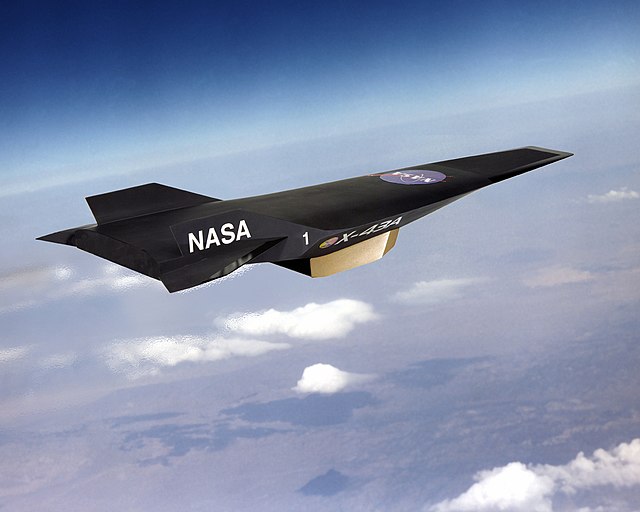Non-rocket spacelaunch refers to theoretical concepts for launch into space where much of the speed and altitude needed to achieve orbit is provided by a propulsion technique that is not subject to the limits of the rocket equation. Although all space launches to date have been rockets, a number of alternatives to rockets have been proposed. In some systems, such as a combination launch system, skyhook, rocket sled launch, rockoon, or air launch, a portion of the total delta-v may be provided, either directly or indirectly, by using rocket propulsion.
A mass driver for lunar launch (artist's conception).
Project HARP, a prototype of a space gun.
Artist's conception of NASA's X-43A hypersonic aircraft with scramjet attached to the underside.
NASA art for a concept combining three technologies: electromagnetic launch assist from a hypothetical 2-mile (3.2 km) track at Kennedy Space Center, a scramjet aircraft, and a carried rocket for use after air launch reaches orbit.
Space launch is the earliest part of a flight that reaches space. Space launch involves liftoff, when a rocket or other space launch vehicle leaves the ground, floating ship or midair aircraft at the start of a flight. Liftoff is of two main types: rocket launch, and non-rocket spacelaunch.
SpaceX Falcon Heavy
SpaceShipOne completed the first human private spaceflight in 2004, reaching an altitude of 100.12 km (62.21 mi).






